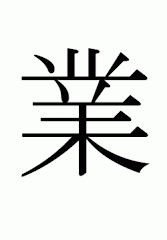Every Friday evening from 5 to 7pm I have taught a number of Kinetic Awareness® classes as technique classes for the 4th years BA students Choreography, at the Korean National University of Arts in Seoul, South Korea.
The classes came after I did a class on working with joints and one on navel-radiation (as used in Developmental Movement / Bonnie Bainbridge Cohen's BodyMind Centering®
I realized that the students were ready to work in-depth on the experience of their own body in movement, with the slow, concentrated way that is so characteristic for especially the beginning phases of Kinetic Awareness®
The major obstacle was not so much the general use of imitation as a means of instruction in Korean teaching culture, but the language barrier: every time I would say something that was meant to be an additional element, the students would immediately stop anything they were doing and direct their full attention back to me, only to have to wait for the translating volunteer student to tell them in Korean what I wanted and then sort of going back into that very sensitive state... to varying degrees of success, obviously.
So guiding from the side has not really been possible and I've had to try and find the most ideal timing and phrasing of giving enough verbal information to the students so that they could continue to work on a given topic on their own, not saying anything else in the class, but rather- if necessary- going to a student and trying to say a few simple words and often mimic and demonstrate in movement what I tried to tell them. Energy communication is crucial in this, I am quite careful about my movement and emotional tension, because the words themselves carry no meaning for either one of us.
Eventually imitation proved to be a major potential kind of instruction: once I'd shown a taste of what I do when I am moving very very slowly on a ball, the students did get the idea and could independently continue to go further on their own.
Today has been another one of those very fruitful and rich sessions.
By now, the students can work independently on a body part of their own decision and know how to use one or several balls. They are no longer imitative in the sense that they look to me for every single answer, but they perhaps ask a question when they want to be absolutely sure, which happens rarely, because all of them are very able to sink very well into a deeper level of sensory awareness. They are also able to indicate what kind of ball they would like to try, change balls if they do not feel comfortable and otherwise have become very nicely independent.
And finally they have become comfortable telling each other about what they have experienced in the session at the end of the class.
This time we were three students and myself: the main indicated topic was shoulder, unless another body part would demand the most attention. The students were very able to take their explorations deeper and deeper, changing ball-positions to find out how exactly a certain ache or stiffness was constructed. One student came into a fully 3-dimensional dance at the final phase, another had his shoulders finally drop and fell asleep for quite a while to get used to this new state, the third student found an unusual freedom in her jaw.
Everybody could by now appreciate the feedback of the other. Before, it was very difficult to even get them back into the studio with their awareness, they all preferred to stay inward and only reluctantly re-connected with the outside world.
The other major tool that I used was repetition of a known structure, which as I have been informed by my wonderful Professor Nam, is a key feature of Asian teaching: one single form to still the mind, so that the sensory differences and (partly unconscious) learning processes can happen. By now the students know what the different phases of a class can be:
I do a scanning, the three breaths (fat, skinny, invisible), exploration of a body part, ball-work with that body-art, re-integration of the body-part with the entire body(mind), and some voice-verbal exchange of experiences.
It is very heartening to be allowed to experience this ongoing process of continued awakening and development every week and I hope to continue this exploration with them until I leave December 13th.
Subscribe to:
Post Comments (Atom)


1 comment:
Today we did a very rough version of Elaine Summers' "Energy Changes"
We went through all the five parts, but had less time to explore each part in depth, and the students had had less time to experience and work with the five phases of Kinetic Awareness® in advance.
Still the results were impressive for a first time, even though there were many struggles to do this dance (going very slowly continuously, without shifting ones' position; the ability to sense, and move each part of the body by itself; finding the least amount of tension with changing the height level slowly etc.)
The feedback in the resulting evaluation afterwards made it clear that each of the students could get many more possibilities out of practicing both Kinetic Awareness® and "Energy Changes".
For myself, once again I finish the week with a very satisfying class, where I see how the students gradually began to more and more get into the work, even after only 11 classes, 2 of which were not originated directly from Kinetic Awareness® but did follow the build-up of the five phases.
Post a Comment